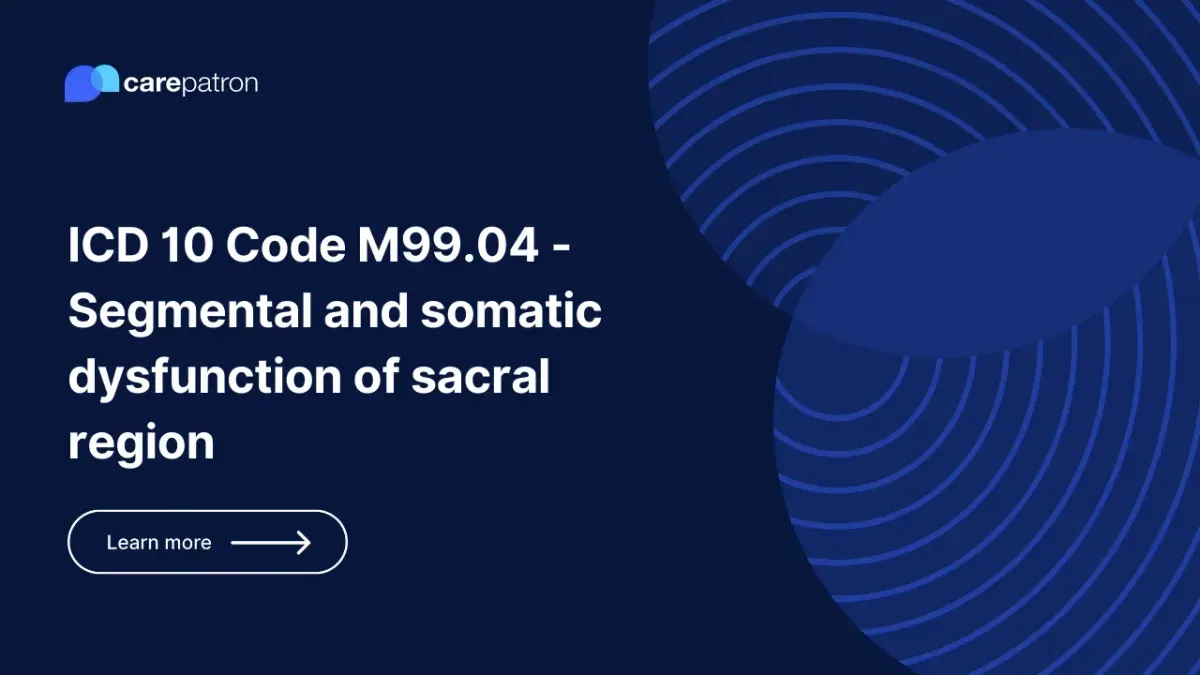
M99.04 – Segmental and somatic dysfunction of sacral region
Learn about ICD-10-CM code M99.04 for segmental and somatic dysfunction of the sacral region, including clinical details and related information.
Use Code
Commonly asked questions
M99.04 is used when the healthcare provider has diagnosed a patient with a segmental and somatic dysfunction of the sacral region.
Treatments for this condition can include physical therapy, osteopathic manipulative treatment, or, in severe cases, surgery.
Diagnosis code M99.04 refers to a clinical condition involving segmental and somatic dysfunction of the sacral region, a part of the spine.
EHR and practice management software
Get started for free
*No credit card required
Free
$0/usd
Unlimited clients
Telehealth
1GB of storage
Client portal text
Automated billing and online payments
